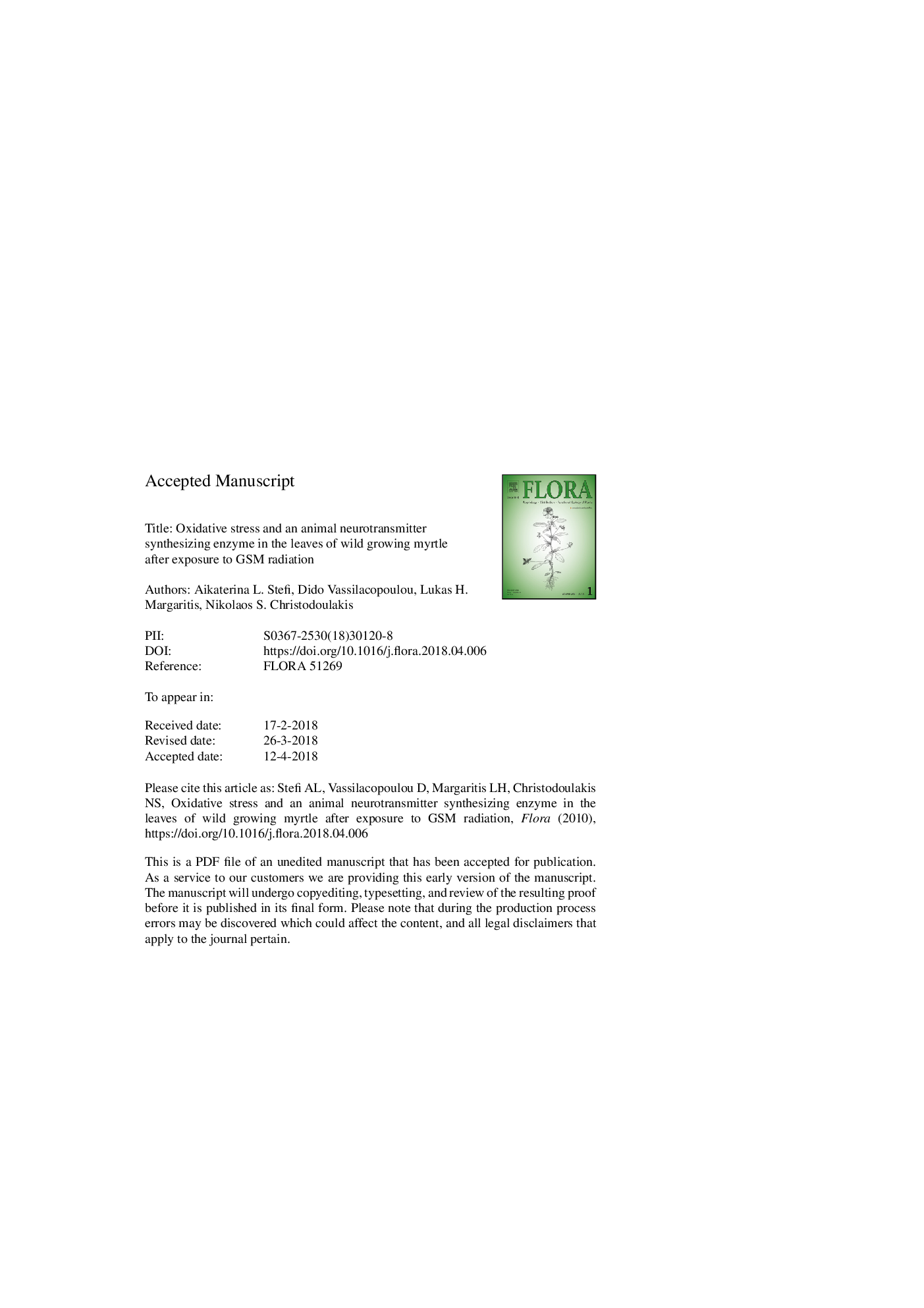| Article ID | Journal | Published Year | Pages | File Type |
|---|---|---|---|---|
| 8470144 | Flora - Morphology, Distribution, Functional Ecology of Plants | 2018 | 31 Pages |
Abstract
Mobile phones turned to be the most common form of public communication. Therefore, life on our planet continues wrapped in a “cloud” of non-ionizing radiations. Myrtus communis L. is an evergreen shrub, common in Mediterranean formations, exposed and adapted to two seasonally separated and qualitatively different environmental stresses. Thus, we considered it important to investigate the response of this tolerant species to emitted GSM non-ionizing radiations and compare it to already available data from thoroughly investigated plant species. Although the leaves of the exposed plants present unaffected tissue arrangement, their mesophyll cells accumulate large amounts of secondary metabolites, their photosynthetic pigments are dramatically reduced, the ROS counted are significantly increased and the presence of DDC, which cannot be detected in the leaves of the control plants, is recorded in high levels. The exposed leaves seem to experience a severe oxidative stress which probably induces DDC expression and the biosynthesis of the neurotransmitter dopamine, the activation of the shikimate pathway and, eventually, the accumulation of secondary metabolites.
Related Topics
Life Sciences
Agricultural and Biological Sciences
Ecology, Evolution, Behavior and Systematics
Authors
Aikaterina L. Stefi, Dido Vassilacopoulou, Lukas H. Margaritis, Nikolaos S. Christodoulakis,
